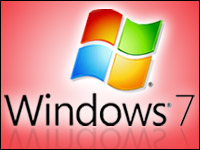
Sales of Microsoft’s Windows 7 boxed software over the first three days of its release have vastly surpassed those of its predecessor, Vista, for the same time period, according new figures from the NPD Group.
Specifically, NPD’s weekly tracking service is reporting that Windows 7 software sales in the U.S. were 234 percent higher for those three days, compared with Vista’s sales.
Windows 7 revenue, however, was not as high for that initial period, amounting to only about 82 percent over revenue earned by Vista. NPD attributes that to a combination of early discounts on presales and a lack of promotional activity for the Ultimate version of Windows 7.
Price Cuts Drive Volume
“There was a lot of marketing around Windows 7 before it was released,” Stephen Baker, vice president of industry analysis at NPD, told the E-Commerce Times. “Also, Microsoft came out aggressively in terms of low-cost pricing on presales.”
In fact, Microsoft’s primary strategy has been to drive volume with aggressive pricing, he said.
In this economy, few companies have been able to grow revenues or sales without price cuts, he added. “Among most companies, the focus in 2009 has been to keep them interested in their products, and the way to do that this year is focus on price.”
The three top-selling Windows 7 products and average selling price have been Windows 7 Home Premium upgrade at US$76; Windows 7 Pro upgrade at $147; and Windows 7 Home Premium Family Pack 3 user upgrade at $149.
PC Sales
By another metric, Windows 7 did not stack up as well against Vista — at least from the perspective of the OEMs that were hoping for a Windows 7-fueled surge in consumer computer purchases. Windows PC sales were down 6 percent compared to PC sales during the Vista launch.
This metric is less illustrative of Windows 7’s popularity, though, Baker argued. October, in general, is a bad month for computer sales — even during robust economic times — because it follows the back-to-school surge and precedes the ramp-up in holiday spending.
Still, total Windows PC sales were up 49 percent in units year-over-year and up 95 percent over the week prior to launch. During the Vista launch, those numbers were 68 percent over the prior year’s sales and 170 percent over the week preceding the launch.
Enterprise Upgrades
Windows 7’s initial success is due to a number of factors, Laura DiDio, principal of ITIC, told the E-Commerce Times, starting with pent-up demand.
“Ninety percent of companies elected to bypass Vista and now have a seven-year-old OS on their hands. These companies all need to upgrade for security, application support and integration reasons.”
Also, the advance word on Windows 7 has been very good, she continued. Microsoft was very careful not to repeat any of the mistakes it made the last time around.
“You can see that from big to little things it has done, from working closing with the OEMs to providing training for resellers to rolling out one beta as opposed to three. You never get a second chance to make a good first impression — Microsoft knows that now.”
Needed a Hit
NPD figures were not the first indication that the Windows 7 launch was going well. Earlier this week, Net Applications reported that Windows 7 already owns a 3 percent share of the market for personal computer operating systems.
When Windows 7 was generally released on Oct. 22, it already had a 1.99 percent share of the market, the firm reported. That figure rose to 3.67 percent by the end of last week.
“Microsoft had to score a hit with this — they knew what they had to do and went out and did it,” DiDio said. “Now, all the stars are aligning as they hoped for Windows 7.”























































Social Media
See all Social Media